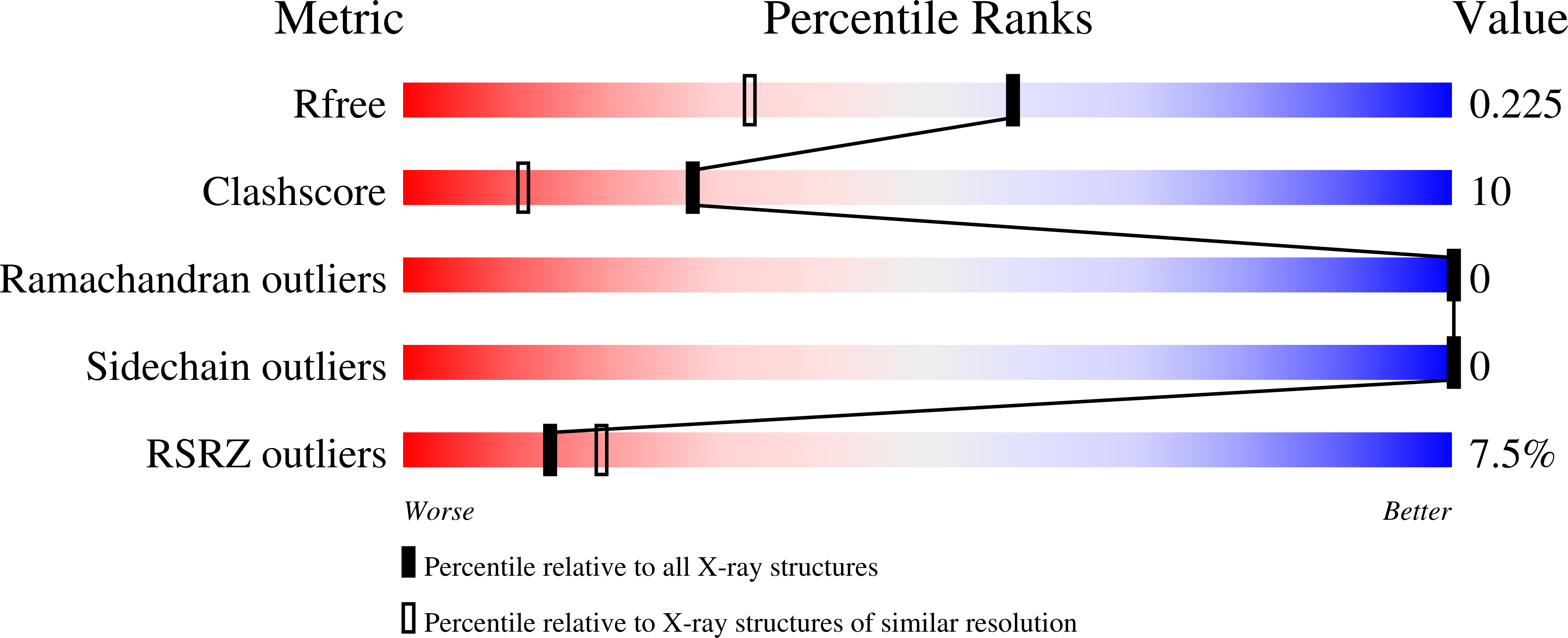The Arabidopsis N alpha -acetyltransferase NAA60 locates to the plasma membrane and is vital for the high salt stress response.
Linster, E., Layer, D., Bienvenut, W.V., Dinh, T.V., Weyer, F.A., Leemhuis, W., Brunje, A., Hoffrichter, M., Miklankova, P., Kopp, J., Lapouge, K., Sindlinger, J., Schwarzer, D., Meinnel, T., Finkemeier, I., Giglione, C., Hell, R., Sinning, I., Wirtz, M.(2020) New Phytol 228: 554-569
- PubMed: 32548857
- DOI: https://doi.org/10.1111/nph.16747
- Primary Citation of Related Structures:
6TGX, 6TH0 - PubMed Abstract:
In humans and plants, N-terminal acetylation plays a central role in protein homeostasis, affects 80% of proteins in the cytoplasm and is catalyzed by five ribosome-associated N-acetyltransferases (NatA-E). Humans also possess a Golgi-associated NatF (HsNAA60) that is essential for Golgi integrity. Remarkably, NAA60 is absent in fungi and has not been identified in plants. Here we identify and characterize the first plasma membrane-anchored post-translationally acting N-acetyltransferase AtNAA60 in the reference plant Arabidopsis thaliana by the combined application of reverse genetics, global proteomics, live-cell imaging, microscale thermophoresis, circular dichroism spectroscopy, nano-differential scanning fluorometry, intrinsic tryptophan fluorescence and X-ray crystallography. We demonstrate that AtNAA60, like HsNAA60, is membrane-localized in vivo by an α-helical membrane anchor at its C-terminus, but in contrast to HsNAA60, AtNAA60 localizes to the plasma membrane. The AtNAA60 crystal structure provides insights into substrate-binding, the broad substrate specificity and the catalytic mechanism probed by structure-based mutagenesis. Characterization of the NAA60 loss-of-function mutants (naa60-1 and naa60-2) uncovers a plasma membrane-localized substrate of AtNAA60 and the importance of NAA60 during high salt stress. Our findings provide evidence for the plant-specific evolution of a plasma membrane-anchored N-acetyltransferase that is vital for adaptation to stress.
Organizational Affiliation:
Centre for Organismal Studies Heidelberg, Heidelberg University, Heidelberg, 69120, Germany.















